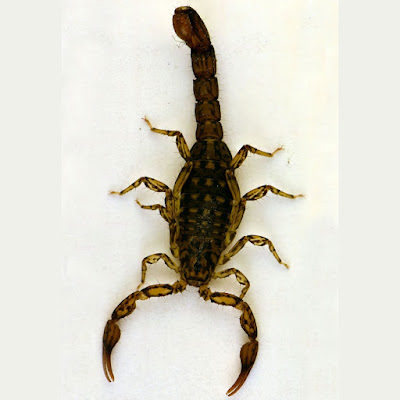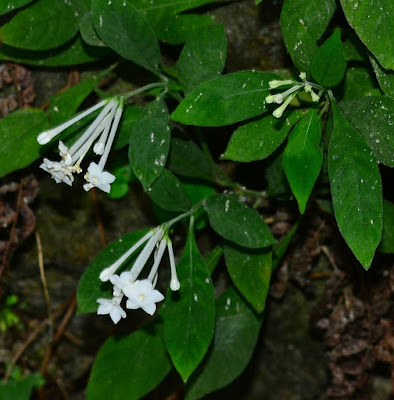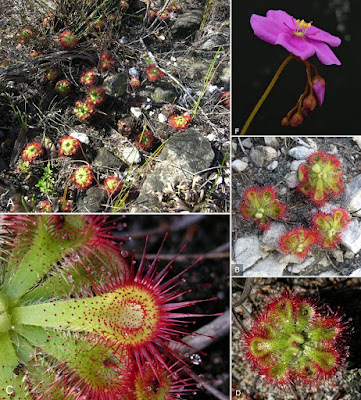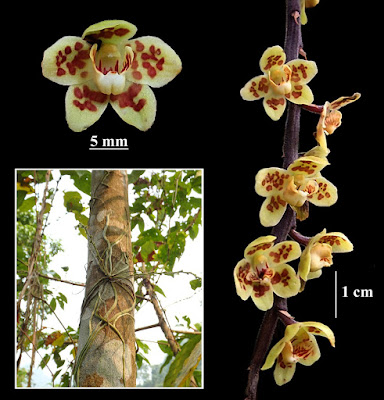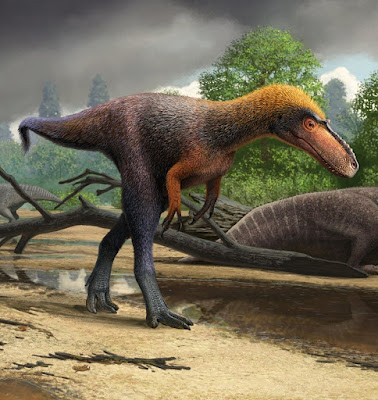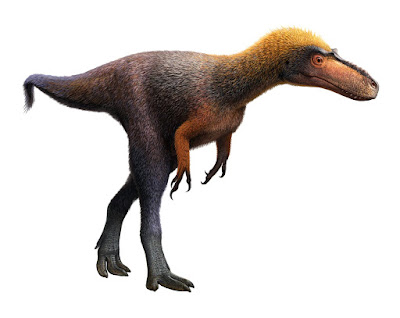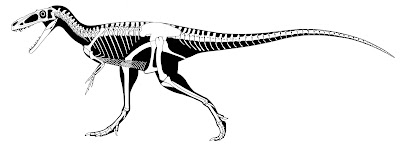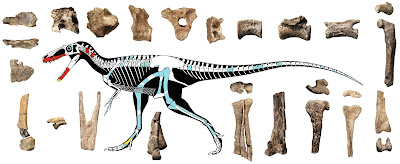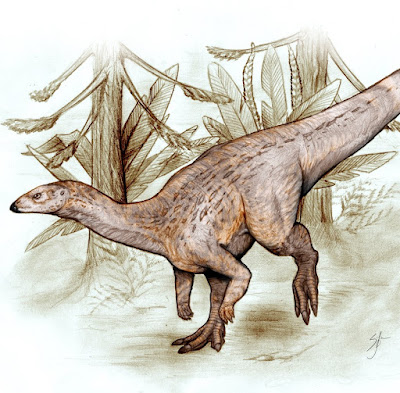[Most Recent Entries] [Calendar View]
Tuesday, May 7th, 2019
| Time | Event | ||||
| 3:21a | [Arachnida • 2019] Taxonomic Revision of the “mexicanus” Group of the Genus Vaejovis C. L. Koch, 1836 (Scorpiones: Vaejovidae)
Abstract Within the scorpion genus Vaejovis C.L. Koch, the “mexicanus” group is composed of species distributed in the mountains of México. This group presents taxonomic problems, because its characterization and the species included in the group have varied through the years. In the present work, we redefine this group based on several morphological characters, and we differentiate it from the other two species groups within the genus: “vorhiesi” and “nit dulus+nigrescens”. Additionally, five new species are described: Vaejovis ceboruco sp. nov., Vaejovis nanchititla sp. nov., Vaejovis santibagnezi sp. nov., Vaejovis talpa sp. nov. and Vaejovis tapalpa sp. nov.; the males of three species are described for the first time (V. dugesi, V. nigrofemoratus and V. tesselatus); and the updated diagnosis for all species is included. Keys for the identification of males and females of the 30 species included in this group are given. Lastly, notes on the natural history and distribution of some species are provided, with maps of known distribution for all the species. Keywords: group characterization, species diagnoses, new species, dichotomous keys, Myriapoda Gerardo A. Contreras-Félix and Oscar F. Francke B. 2019. Taxonomic Revision of the “mexicanus” Group of the Genus Vaejovis C. L. Koch, 1836 (Scorpiones: Vaejovidae). Zootaxa. 4596(1); 1–100. DOI: 10.11646/zootaxa.4596.1.1 | ||||
| 3:38a | [Botany • 2019] Spiradiclis cavicola (Rubiaceae) • A New Species from Limestone Caves in southwestern China
Spiradiclis cavicola L. Wu, Hareesh & B. Pan, a new species from limestone caves in Guizhou and Guangxi province, southwestern China, is described and illustrated. This species which is morphologically similar to S. scabrida, can be easily distinguished from the latter by its petiole 0.5–3 cm long, leaf blade elliptic to oblong, and flower homostylous that with anthers and stigma are positioned at the throat of corolla tube or sometimes stigma slightly above anthers. The detailed morphological characters together with illustrations, diagnostic comparisons and habitat etc. are presented. Bo Pan, Rong-Hui Tu, Vadakkoot-Sankaran Hareesh and Lei Wu. 2019: Spiradiclis cavicola (Rubiaceae), A New Species from Limestone Caves in southwestern China. Annales Botanici Fennici. 56(1-3); DOI: 10.5735/085.056.0101 | ||||
| 4:04a | [Botany • 2018] Drosera xerophila (Droseraceae) • A New Species from Overberg District, South Africa, and An Overview of the Rosetted Hemicryptophyte Sundew Species from Western Cape Province
Abstract Drosera xerophila A. Fleischm., a new species of sundew from Overberg District, Western Cape Province, South Africa, is described and illustrated together with details on its distribution, ecology, habitats and conservation status. The new species is morphologically compared with presumably closely related taxa. An identification key and synopsis are provided for all rosetted hemicryptophyte (”perennially growing”) Drosera species of the SW part of Western Cape Province, with synonymy, types, distribution (including maps) and citation of specimens and georeferenced photographs. The names D. aliciae Raym.-Hamet, D. curviscapa T. M. Salter and D. curviscapa var. esterhuyseniae T. M. Salter are lectotypified. Key words: carnivorous plants, Drosera, Droseraceae, Fernkloof Nature Reserve, fynbos, new species, nomenclature, Overberg District, South Africa, sundew, taxonomy, typification, Western Cape Province Drosera xerophila A. Fleischm., sp. nov. Diagnosis: — Related to Drosera esterhuyseniae (T. M. Salter) Debbert, but differs from that species in having broadly spatulate, decumbent, rosette leaves (leaves narrowly cuneate to rectangular, held upright at an angle of 70°–30°) and glabrous, emarginate to bifid stigmatic tips (stigmas entire, knob-shaped, papillate). Resembles D. aliciae Raym.-Hamet due to similar flat, rosetted habit and basally ascending inflorescence scape, but differs from that species in having well-pronounced, cuneate, eglandular petioles (3–)5–10 mm long (petiole 1–3(–5) mm long and hence leaves appearing almost sessile [“apetiolate”] in D. aliciae), in style arms entire or only shortly bifid in distal ⅓–¼ (style arms forking below middle, usually again bifid or tripartite in distal part) and fusiform seeds without terminal appendages (seeds narrowly fusiform with filiform appendage on micropylar and chalazal end). ... Ecology and habitats — Drosera xerophila grows in Sandstone Fynbos vegetation over Table Mountain Sandstone, on well-drained ground in sandstone gravel, in cracks of sandstone rock, or in sandy soils with little organic matter (Fig. 2A, B). .... Etymology — The specific epithet denotes the fact that this species prefers to grow on well-drained, drier, only slightly moist ground (xerophilus = dry loving). This is not unusual for several species of Drosera from Mediterranean areas in the S hemisphere, but contrasts with the “conventional”, largely N-hemisphere-based experience of sundews as typical bog plants. Andreas Fleischmann. 2019. Drosera xerophila (Droseraceae), A New Species from Overberg District, South Africa, and An Overview of the Rosetted Hemicryptophyte Sundew Species from Western Cape Province. Willdenowia. 48(1); 93-107 (DOI: 10.3372/wi.48.48106 | ||||
| 4:15a | [Botany • 2019] Chiloschista gelephuense (Orchidaceae: Aeridinae) • A New spotted Chiloschista from Bhutan
Abstract A new species of Chiloschista from a restricted area in Bhutan is described and illustrated. It is compared with C. parishii from Myanmar and Thailand, which has similarly colored flowers and from which it differs by the larger flowers, 15–18 mm versus 8–10 mm, and the lack of a glandular and pubescent, erect and curved callus lobe inside the lip, which is generally seen in other similarly colored species of this genus. Key Words: Aeridinae, Bhutan, Himalaya, new Chiloschista, Orchidaceae, Vandeae
Chiloschista gelephuense Ch.Gyeltshen & Dalström, sp. nov. TYPE: Bhutan. Gelephu: North of Gelephu Tshachu hot springs ..., alt. ca. 300 m, epiphytic in shade on smaller trees, collected on 12 May, 2014, and flowered in cultivation at the Royal Botanic Garden, Serbithang, 12 May, 2015, S. Dalström 4212 & Ch. Gyeltshen (holotype: THIM) (Fig. 3–4). Diagnosis: Chiloschista gelephuense is superficially similar to C. parishi in the yellowish flowers with brown spots on the sepals and petals, but differs by the larger flower, 15–18 mm across versus 8–10 mm across for the latter species. Chiloschista gelephuense also differs from other similarly colored species in the genus by the lack of a glandular pubescent, erect and curved callus lobe inside the lip. Etymology: Named in reference to the sub-district (Dungkhag) of Gelephu, currently the only area where this species has been found. Choki Gyeltshen, Stig Dalström, Nima Gyeltshen and Kezang Tobgay. 2019. A New spotted Chiloschista (Orchidaceae: Aeridinae) from Bhutan. LANKESTERIANA. 19(1); 23-29. DOI: 10.15517/lank.v19i1.37030 | ||||
| 9:13a | [Paleontology • 2019] Suskityrannus hazelae • A mid-Cretaceous Tyrannosauroid and The Origin of North American end-Cretaceous Dinosaur Assemblages
Abstract Late Cretaceous dinosaur assemblages of North America—characterized by gigantic tyrannosaurid predators, and large-bodied herbivorous ceratopsids and hadrosaurids—were highly successful from around 80 million years ago (Ma) until the end of the ‘Age of Dinosaurs’ 66 Ma. However, the origin of these iconic faunas remains poorly understood because of a large, global sampling gap in the mid-Cretaceous, associated with an extreme sea-level rise. We describe the most complete skeleton of a predatory dinosaur from this gap, which belongs to a new tyrannosauroid theropod from the Middle Turonian (~92 Ma) of southern Laramidia (western North America). This taxon, Suskityrannus hazelae gen. et sp. nov., is a small-bodied species phylogenetically intermediate between the oldest, smallest tyrannosauroids and the gigantic, last-surviving tyrannosaurids. The species already possesses many key features of the tyrannosaurid bauplan, including the phylogenetically earliest record of an arctometatarsalian foot in tyrannosauroids, indicating that the group developed enhanced cursorial abilities at a small body size. Suskityrannus is part of a transitional Moreno Hill (that is, Zuni) dinosaur assemblage that includes dinosaur groups that became rare or were completely absent in North America around the final 15 Myr of the North American Cretaceous before the end-Cretaceous mass extinction, as well as small-bodied forebears of the large-bodied clades that dominated at this time.
Systematic palaeontology Dinosauria Owen, 1842 Theropoda Marsh, 1881 Coelurosauria Tyrannosauroidea Suskityrannus hazelae gen. et sp. nov. Etymology. Genus: from the Zuni ‘Suski’ (coyote) and the Latin ‘tyrannus’ (king). The specific name is for Hazel Wolfe, whose tireless efforts, support and sacrifices made possible much of the success at the Moreno Hill fossil localities. Sterling J. Nesbitt, Robert K. Denton Jr, Mark A. Loewen, Stephen L. Brusatte, Nathan D. Smith, Alan H. Turner, James I. Kirkland, Andrew T. McDonald and Douglas G. Wolfe. 2019. A mid-Cretaceous Tyrannosauroid and The Origin of North American end-Cretaceous Dinosaur Assemblages. Nature Ecology & Evolution. DOI: 10.1038/s41559-019-0888-0 New three-foot-tall relative of Tyrannosaurus rex | ||||
| 10:15a | [Paleontology • 2019] Osteology of the Patagonian Ornithopod Talenkauen santacrucensis (Dinosauria, Ornithischia)
Abstract Talenkauen santacrucensis represents one of the most complete South American ornithopods yet discovered. This dinosaur comes from the Mata Amarilla Formation (Turonian) of Santa Cruz Province, Argentina. The aim of this contribution is to present a detailed description of Talenkauen santacrucensis. Features of the cervical series of Talenkauen, which are shared with other elasmarians, indicate that these dinosaurs have a proportionally longer neck than other ornithopods. These traits were convergently acquired by several saurischian clades. Additionally, some features, including an ornamented labial surface of the mandibular teeth and a sigmoidal greater trochanter of femur, are traits shared by most elasmarians, and may prove to be synapomorphies of this clade. A phylogenetic analysis recovers most Cretaceous Gondwanan ornithopods in the clade Elasmaria. This analysis indicates that Elasmaria was distributed more widely geographically and temporally than previously thought. Keywords: Ornithopoda, Euiguanodontia, Elasmaria, Talenkauen santacrucensis, Gondwana, Patagonia
Sebastián Rozadilla, Federico Lisandro Agnolín and Fernando Emilio Novas. 2019. Osteology of the Patagonian Ornithopod Talenkauen santacrucensis (Dinosauria, Ornithischia). Journal of Systematic Palaeontology. DOI: 10.1080/14772019.2019.1582562 |
| << Previous Day |
2019/05/07 [Calendar] |
Next Day >> |
